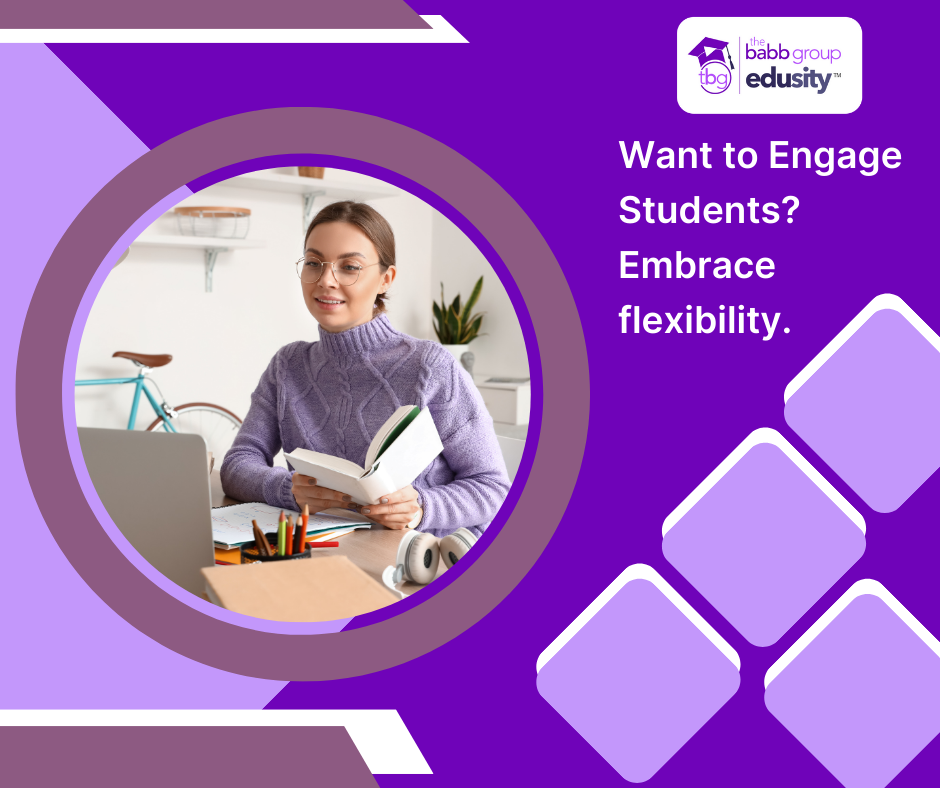Being flexible with assignment options and adapting to the diverse needs of students contributes to creating practical assignments, classroom connections, and more engaging learning experiences.
Flexible Assignment Options
The feedback Fry received echoes the sentiments of many educators who have embraced a more inclusive assignment submission strategy. By accepting a mix of written work, presentations, and videos, instructors have witnessed a fascinating array of submissions. This approach caters to our student body’s diverse talents and makes grading more engaging and interesting. As educators, we have the privilege of guiding students on their learning journeys and adapting our methods to accommodate their strengths, which fosters a more supportive and enriching academic environment.
Grace and Empathy in the Classroom
Dorothy Miraglia, VP of Professor Services, adds another layer, emphasizing the importance of flexibility in our student interactions. “I learned to be more flexible with my students. Not a pushover, but take more time to get to know them and their struggles outside the classroom to make things more accommodating.” We must stay attuned to student’s individual struggles outside the academic realm, allowing us to provide a more compassionate and understanding learning environment.
Miraglia’s call for grace is a poignant reminder that, as educators, we often do not know the full extent of our students’ experiences and hardships. By listening and understanding, we build stronger connections with our students and create an environment where they feel supported and valued. In the face of uncertainties, a little empathy goes a long way in fostering a positive and conducive learning atmosphere.
Integrating flexible options in our classrooms through course design and instructor interactions can lead to successful outcomes for students and institutions.
For more course design tips, sign up for The Babb Group’s monthly newsletter.
Angela Britcher
Latest posts by Angela Britcher (see all)
- Enhancing First-Year Experiences in Higher Education - August 1, 2024
- Enhancing Education with Virtual Reality: A Hands-On Approach - June 27, 2024
- Higher Education Trends: Insights from Our COO, Sheila Fry - June 13, 2024
